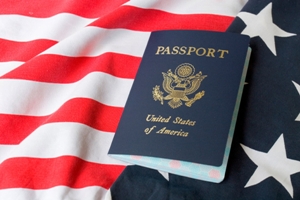Family reunification
Family reunification is a process whereby you can obtain a residence permit if a close relative is a U.S. citizen or a Green Card holder.
Anyone who lives in the USA submits documents for processing, relatives get in a long queue and then, if all is well, they get their residence permits.
Reunification as a process takes from 1 to 15 years and depends on the lawyer. There will be a lot of paperwork, questionnaires, forms and certificates, so it’s difficult to manage without a lawyer.
Parents and spouses of a U.S. residents are not quoted, that is, the country does not limit number of people who can claim reunification within a year.
 The law divides the rest of the relatives into 4 types.
The law divides the rest of the relatives into 4 types.
- F1 Children who are not married, young children of children (grandchildren). Approximate waiting time 1-5 years.
- F2 Spouses, children under 21 years, unmarried. Approximate waiting time 1-4 years.
- F3 Married and married children of U.S. citizens, their young children and spouses. Approximate waiting time 8-10 years.
- F4 Brothers and sisters of U.S. citizens, if citizens over the age of 21, spouses and small children of brothers and sisters. Approximate waiting time 7-15 years.
The greatest demand is in the group F2. By law, you can increase the quota, if in others there are unused visas. It works and sometimes, if the queue for a category is already very large, the quotas of others can be reduced, even if there is demand for them.
The quota is given for the whole category, but the families of U.S. citizens get more visas, where the family ties are closer.
So, when you should the reunification consider as a variant of immigration? Only when you need to transport to the U.S. your native minor children, or adults, but not married.
Young children will be in priority.
- The U.S. resident must file an immigration petition in Form I-130 with the Immigration and Naturalization Service (USCIS). They send the documents to the National Visa Center (NVC).
- In the NVC receive a petition; request a list of documents on your case, and the applicant must collect all the originals and copies. The documents received are checked and approved, and then NVC will invite a relative to an interview in the U.S. Consular Section in the country where the relative is located.
- At last, one of the most important documents is an Affidavit of Support (I-134), which obliges the applicant to help his relative financially.
Complex moments
- One parent
a complex case is that the parents of the child are divorced, you want to take the child to the States. Without permission from the second parent, chances are zero until the child is 18 years old. Even if you did not communicate with the father of the child from the moment of his conception, he is still considered a full-fledged parent, if not deprived of custody. - The child is married
if your child is married, he does not fall into the category of next relatives. You cannot ask for a reunion with a child who is married, without his spouse. That is, if your daughter is married and you want to invite her to the U.S., then only with her husband, and only in the third category.
In addition, if you have other characteristics of the family that are not standard, you can use legal advice for immigration cases.







